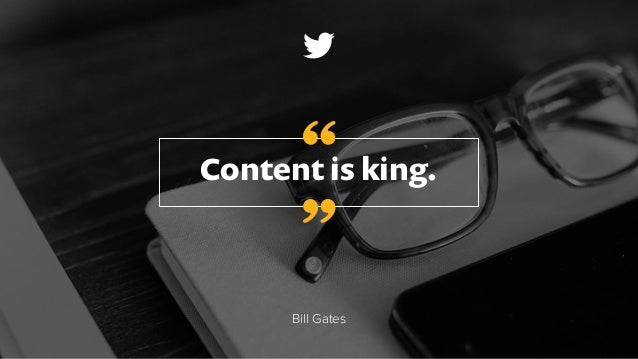The marketing strategy is the roadmap for your company's future success. Marketing organizations invest time and resources to create short-term and long-term marketing plans. A long-term marketing strategy is a process of developing and implementing a plan that will last at least 3 years. This is also known as an extended period. The idea behind this type of strategy is to have a plan in place that you can use for the forthcoming planning period.
Although market pioneers have a cost advantage and can quickly adapt to changes in customer needs. Having a comprehensive marketing plan can increase the engagement rate even for entrepreneurs and small business owners, resulting in double-digit growth. Businesses can improve their competitive position through an inbound marketing campaign and a marketing audit.
Table of Contents
What Is a Marketing Strategy?
A marketing strategy is a plan of action to help you achieve your business goals. It’s not just about what you do, but how you do it and when you do it. A good marketing strategy will be based on research that shows where your customers are, who they are, why they buy from you, and how much they spend with you.
A well-conceived marketing strategy can help you achieve your goals more quickly than if you were doing everything by yourself. Many small businesses fail because they don't have a clear vision of their future. The business owner starts in business without any idea of how long it's going to take to grow. That's a recipe for failure!
The first step to developing a marketing strategy is to think about your overall business objectives. What do you want to accomplish? Are you looking to increase sales, expand into new markets, or improve customer service? Once you've answered these questions, you'll need to determine which strategies will work best to help you achieve those goals.
Short-Term and Long-Term Marketing Strategies
What Is a Short-Term Strategy?
A short-term marketing strategy is one that you create to help your business reach its goals. It’s not the same as a long-term marketing plan, which will be discussed later on in this article. Short-term marketing plans are created to meet immediate needs, such as increasing sales during a particular season or promoting a new product. These types of strategies usually don’t last very long because they are only designed to give a temporary boost. They may work well for a few months but then fall apart when those needs no longer exist.
Short-Term Marketing Activities
These activities are a form of advertising that is used to promote products or services. It is usually done in the short term, and it can be done through various media such as print ads, TV commercials, radio spots, billboards, etc. Short-term marketing techniques include:
- Direct mail (mailing direct to potential customers)
- Print ads (printing advertisements in newspapers, magazines, brochures, flyers, etc.)
- Billboards (displaying signs along roadsides)
- Outdoor advertising (placing ads in public places like bus shelters, subway stations, etc.)
- Telemarketing (calling people at home using prerecorded messages)
- Online advertising (advertising online, including websites)
- Pay-per-click advertisement
- Trade Shows
- Promotional Discounts
- Price reductions for limited-time
What Is a Long-Term Marketing Plan?
A long-term marketing strategy is a comprehensive plan that helps you achieve your larger business objectives. This type of marketing strategy involves planning so that you know what you're going to do next. You should develop a long-term marketing strategy if you have more than one goal. For example, you might want to sell more products, increase profits, get better customer service, etc. To make sure that you achieve all of your goals, you must put together a long-term marketing strategy.
Long-Term Marketing Activities
The long-term marketing activities include:
- SEO
- Content Marketing Initiatives.
- Social Media
Short-Term Marketing Strategy vs. Long-Term Marketing Strategy
A short-term marketing strategy is different from a long-term marketing strategy in two ways. First, a long-term marketing strategy is developed to help you achieve your larger business goals. Second, a long-term marketing plan includes several steps that must be taken before implementing a short-term marketing strategy. The following sections explain each of these differences.
The main difference between a short-term marketing strategy and a long-term marketing strategy is that the latter has a much more extensive scope. A long-term marketing strategy includes planning for future growth and development. It takes into account factors like market trends, competition, customer behavior, and other important things that affect how successful your company will be.
The goal of a long-term marketing campaign is to develop a plan that will allow your company to grow and thrive over a long period as inbound marketing is the most efficient form of marketing. To do this effectively, it’s important to take into consideration all aspects of your business. You should consider everything from your products and services to your customers and their needs.
When Should I Start Creating a Long-Term Marketing Plan For My Business?
The best time to start developing a long-term marketing strategy is right after you have completed your initial marketing plan. At this point, you already have a good idea of what you want to accomplish in the next few years. You also have a good understanding of what your current marketing efforts are doing. This gives you a great starting point from which to build upon.
If you haven’t created a long-term marketing strategy yet, then you should wait until you have at least one successful marketing campaign under your belt before you try to create a new plan.
Identify Your Company Objectives
Before you start thinking about how to market your business, you need to do strategic planning to identify your overall business objectives. Your business strategy could include the following marketing objectives:
- Increase sales
- Improve customer satisfaction
- Reduce costs
- Develop a brand identity
- Create a unique selling proposition
How Do I Create a Long Term Plan?
Creating a long-term marketing plan is similar to creating any other type of marketing plan. The main difference is that when creating a long-term marketing plan, you need to think about several years into the future instead of just thinking about the short term.
Creating a long-term marketing program isn’t easy for the marketing team. There are many different steps involved in creating a solid plan that will ensure success. Here are some tips that will help you get started.
Create Buyer Personas
This is the first and foremost step of a comprehensive marketing plan. Buyer personas are a great way to understand your customers and how they use your product. They’re also a great tool for marketers, as they can help you create more effective messaging and content that resonates with the people who matter most.
You can create user personas by using an online persona builder or by talking to your customers directly. Either way, the process involves asking questions such as these:
-
- What are the demographics of your target audience?
- Who are your ideal customers?
- What problems do they face?
- How does your product solve those problems?
Determine Your Goals
Before you begin any kind of marketing campaign, you need to know exactly what you want to accomplish. If you don’t have a clear vision of where you want to go, you won't be able to make sure that you’re heading in the right direction. Goals can be segregated into categories, such as:
- Your company goal might be to increase sales, expand your customer base, or improve your brand image.
- Develop a marketing goal that helps you accomplish the organizational goal. For example, if your goal is to increase sales, your marketing goal should be to drive more website traffic. The marketing goals are further sub-divided into short-term goals and long-term marketing goals.
- Once you've identified your goals, you'll need to set SMART goals. Here, SMART is the acronym for specific, measurable, attainable, relevant, and time-bound. The SMART goals are a set of guidelines that help you to achieve your marketing goal. Your marketing team needs to consider website optimization, SEO, keyword research, analyze links, create backlinks, etc.
Define Your Market
Once you know what you want to achieve, it’s time to define your target market. Who are your ideal customers? What do they look like? Where do they live? How old are they? What are their interests? Knowing these answers will help you determine who you want to attract and why.
Identify Your Target Audience
Once you know who your audience is, you can start thinking about ways to connect with them. For example, if your target audience is women ages 18 to 35, you might decide to focus on social media sites like Facebook and Twitter. Or maybe you could advertise in magazines targeted at young adults. The point here is that you need to think about your audience before you even start writing a single ad copy.
Research Your Competition
If you want to succeed, you need to understand what your competitors are doing. Find out what they’ve been up to lately by reading industry articles and blogs. This way, you can learn what they're saying and what they're doing. From there, you can figure out whether or not you want to follow in their footsteps.
Set Your Marketing Budget
Next, figure out how much money you will need to spend to get where you want to go. If you only have enough money to cover half your goal, then you might need to cut back somewhere else.
Develop an Advertising Campaign
Now that you've done your research, it’s finally time to write your advertising campaigns. Think about what you want to say and how you want to say it. Then, come up with creative ideas that will grab people's attention. Once you've written your ads, you'll need to find places where your target audience hangs out online. These include search engines, social networking sites, forums, and so on.
Once you have determined which types of ads you want, you need to choose between paid advertisements and organic search engine optimization (SEO). Paid advertisements are more expensive, but they tend to get better results. Organic SEO takes a lot of work, but it tends to be less expensive.
Make Sure That All of Your Plans Fit Together
Finally, make sure that your plans fit together. For example, if your goal is to double your monthly revenue, but you only have enough money for 10% growth, then you won't be able to reach your goal.
Write It Down!
Once you have finished planning your goals, budget, strengths, and weaknesses. It is time to put them in writing. This will allow you to refer back to them whenever you need to.
Review & Adjust as Needed
Once you have written down all of your ideas, you can start reviewing them with the entire team. Look over each section and ask yourself, what am I doing well? where can I improve?
Revise as Needed
As you continue to review your plan, you may find that some sections don't work anymore or that you need to add more information to others. Either way, revise and update your plan as needed.
Implement & Evaluate
At this stage, you should be ready to implement your plan. Start with the first milestone and see how things go. Then, once you have reached the second milestone, evaluate whether or not your current plan is working. You can use this evaluation to adjust your plan so that it works better for you.
Repeat Steps 1-9 Until You Reach Your Goal
If you aren't happy with the results after implementing your plan, then you can repeat steps one through nine until you reach your desired result.
Tips to Achieve Success Through Long-Term Marketing
Think About Future Growth
You should always focus on the bigger picture and use your short-term plans to lead to successful long-term plans.
Leave Room for Changes
Although a lot of effort and research goes into the making of a marketing strategy for the long run; there can be elements that do not produce expected results. Some plans hit right in the bull's eye while others are a near miss. Your long-term strategy should leave margin for flexibility so that you can add or subtract elements to get the required results
Choose the Right Marketing Tactics
The right set of tactics can take your strategy to the next level. The marketing team needs to think about the combination of effectively advertising the brand and doing it through popular channels. Let's look into some effective tactics for achieving results, such as:
SEO
Search Engine Optimization is the most effective tactic. You need to be able to stand out from the crowd and attract new customers to succeed. Search engine optimization is a great way of getting your business noticed by the people who are searching for your services or products. It can be an effective tool for increasing sales and leads.
Content Strategy
Compelling content is the backbone of an inbound marketing strategy. It plays a vital role in the purchase journey of potential customers. When creating content your marketing team should focus on high-quality content. User-generated content such as images, videos, and reviews posted by users is the most effective long-term initiative. Since user-generated content is original content it adds value to your brand. Having downloadable content attracts more organic traffic to your website.
To see an increase in Return On Investment, email marketing and blogging should be the main focus of your content marketing strategy.
Social Media Platform
Social media has become an integral part of our lives. If you want to stay relevant, you need to be present on social media. Today business owners want to use social media as part of their overall strategy to increase online presence. Following is the list of ways this tactic will work in the long run:
- Create a clear purpose for why you're using social media.
- Make sure you're sharing valuable content.
- Be active on all platforms.
- Use analytics to measure success.
- Share links from blogs and websites that relate to your niche.
Social media accounts are a great way for link growth, they are free and give a boost to your Search Engine Optimization (SEO).
Radio/TV commercials
Broadcasting commercials over the airwaves or via cable television is a great marketing strategy in the long run.
Branding
Branding is a long-term marketing strategy. This means that it takes time to build trust between the consumer and the brand. To build trust, the brand has to show its commitment to the customer. As a result, the brand becomes a trusted entity among consumers.
In addition, when a brand shows its commitment towards the customer, it creates a sense of loyalty.
Consistency and Frequency of Marketing Message
The consistency of the messages is an important factor in determining the effectiveness of communication. For example, if a company has a consistent message about its products or services but does not communicate it often enough to consumers, then this inconsistency may cause consumers to lose interest in the brand.
The frequency of the message also matters. Consumers have short attention spans and therefore, frequent communications with them may increase the impact of the message. The marketing agency ensures that a consistent message is circulated through all social media platforms. In terms of frequency at the least three exposures can result in maximum reach and higher conversion rates.
It is also important to keep the design elements consistent across all channels.
Virtual Events
The future of event marketing is in virtual events. Virtual events are a great way to reach your target audience, attract new customers and increase brand awareness. The key advantage of virtual events is that they can be held at any time, anywhere, without having to invest large sums of money.
A virtual event is a live presentation that includes interactive elements like polls, surveys, quizzes, games, etc. These elements help create a fun experience for participants while allowing marketers to collect data about their preferences.
A virtual event can also include pre-recorded videos, presentations, webinars, interviews, etc. It's up to the marketers to decide what type of content should be included in the event. The virtual event allows marketers to connect with potential clients in real life. They can meet face-to-face, ask questions, make sales pitches, etc.
Marketers can use virtual events to promote their brands by creating a unique identity for themselves. They can also use these events to educate their audiences on various topics related to their industry.
Why Choose Osborne Digital Marketing?
Creating a long-term marketing plan can be overwhelming for a business owner. Why not lean on the expertise of a marketing agency. We are your marketing partners to give insights about the marketing warfare strategies to understand your competition better. Osborne Digital Marketing provides you with marketing plan templates and helps you create your long-term SEO strategy resulting in long-term organic growth.
Conclusion
The decision to develop a long-term marketing strategy is one of the most important decisions you will make as a business owner. It’s also one that can be difficult to make because it requires a positive mindset toward marketing. If you want your business to succeed, you need to look beyond the next month or quarter. You need to start thinking about the future and where you want your company to go.
A long-term marketing strategy allows you to develop a plan that you can use over an extended period without having to constantly change things up every few months. It’s important to remember that your customers are going to expect changes from you regularly. If they see that you aren’t making any changes to your business, then it’s likely that they won’t return to you when those changes do come about.
Now that you have all of the information needed to create a long-term strategy, you can begin creating a complete marketing strategy.






